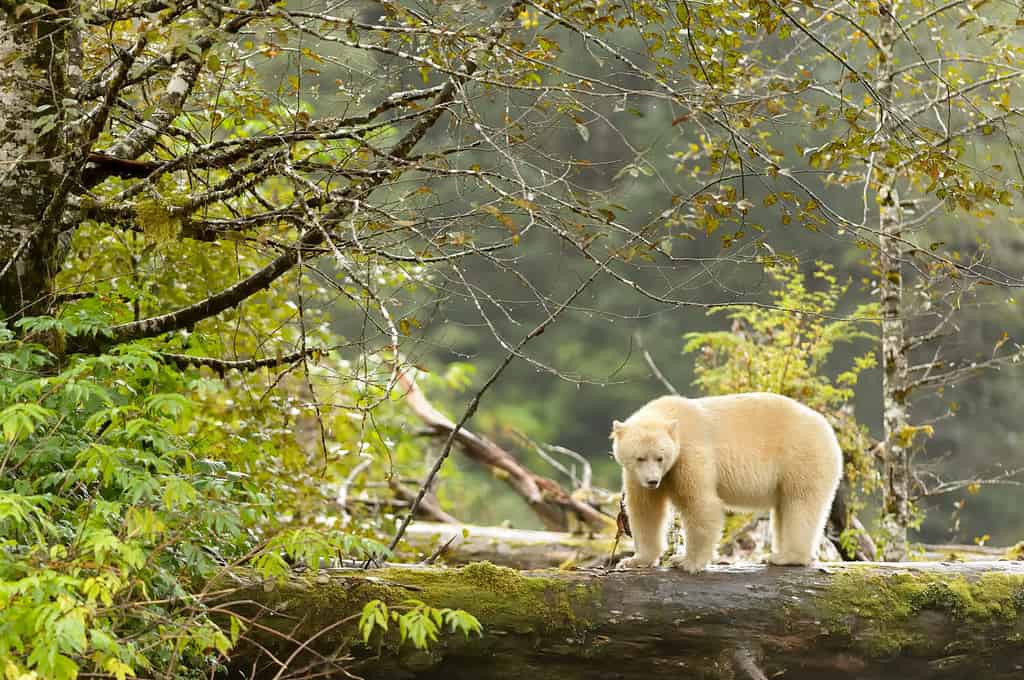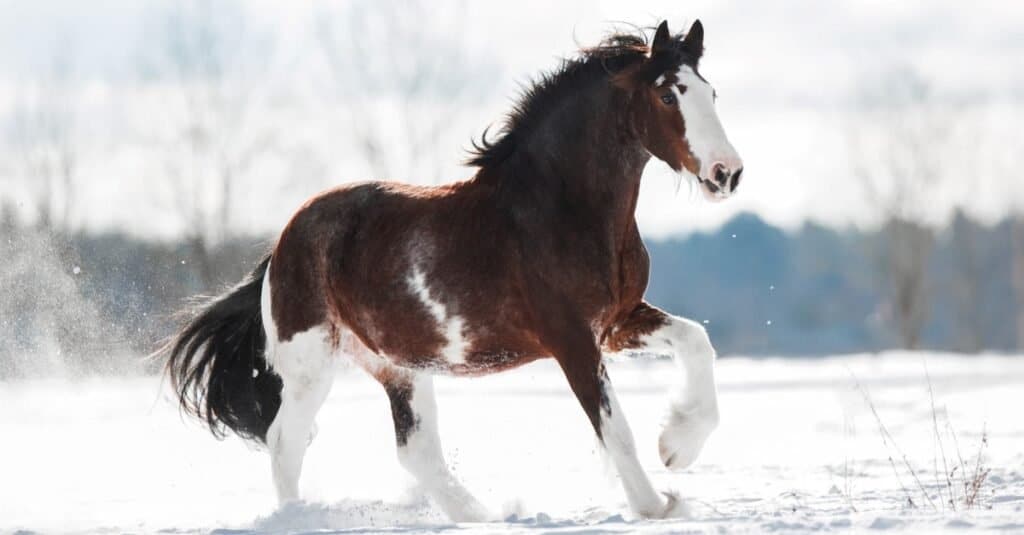With few exceptions, animals evolve to fit their environments. Whether this be related to hunting, sheltering or getting water, Darwinian Theory insists that any species that survives must adapt to its surroundings. And nowhere is this so true as in an animal’s coloration. We all know the chameleon, the most successful example. But there are thousands more, from butterflies whose wings look like the faces of larger animals, to a simple brown coat that blends into the forest underbrush. For this to work, some animals in a species must mutate — creating a “test lab” for traits that might ensure greater survival. And for every successful mutation, there are millions of ways for an animal to mutate that are no help in its environment, or even a hindrance. The incredibly seldom-seen piebald bear exemplifies this concept. Let’s delve into what piebald bears are, and how rare they are.

Spirit bears are leucistic, which isn’t the same as piebaldism.
©NaturesMomentsuk/Shutterstock.com
Piebald Bears: There Are Practically None In The World
Piebald is technically classified as a genetic disease affecting an animal’s pigmentation. But we’ll get into the gene science in a bit. The end effect on an animal that carries this disease is that their skin or fur has no pigmentation in places. This creates a kind of patchwork pattern on their bodies. As a result, piebald animals tend to have white, black or brown splotches or spots on their coats. This often makes them highly distinct from the other members of their species.
Piebald individuals are found within dogs, cats and several hoofed species, and the rarity of this trait varies from one species to another. (For example, Tuxedo cats — so named for their black-and-white formalware appearance — are piebald, and have been preferentially bred to exhibit this trait!) Yet within bears, the disease is so rare as to be almost undocumented! In fact, when a piebald black bear appeared on camera this year in Washington State, it became what might just be the sole physical documentation of this condition in the Black Bear species. Spotted” on Tokeland, Washington’s Shoalwater Bay Reservation, the bear certainly confused its observers, who wondered aloud whether they were looking at a misadventured panda! (With white-and-black markings in roughly similar locations, it’s understandable how they reached that conclusion.)
The Science of Piebald Animals
We mentioned that Piebaldism is technically a disease. And while it won’t inhibit an animal’s internal systems or ability to think or move, its effect on an individual animal’s coat could make it less effective at camouflaging itself. As our friend the Tiktok-famous piebald black bear indicates, this isn’t a death sentence or anything — but it is a misfire of the genes.
Essentially, when a piebald animal is in embryo, certain cells, known as melanocytes, fail to travel all the way over the whole animal’s skin. Since this process starts at the embryo’s back, the lack of pigment usually occurs in the embryo’s front — that is to say, the head, face, neck and chest of the animal.
Some piebald animals are so common, we don’t even really notice them: horses, pigs and cows commonly come with spotted coats. Though not always, this is sometimes the result of the expression of the Piebaldism gene.

Some animals, like horses, exhibit Piebaldism more frequently.
©OlesyaNickolaeva/Shutterstock.com
Albino Bears and Leucistic Bears: Not Piebald
You may have heard of albinism, a condition where an animal has no pigment whatsoever in their skin, fur or hair, and are therefore completely white. Albino individuals within a species also tend to have red eyes. This is a separate genetic mutation from piebald, where some pigmentation is released to the skin, but not enough to “dye” the animal completely, leaving white patches, or places where a uniform hue “lightens”.
There is also a species of bear exhibiting a trait known as leucism: the Kermode Bear, found almost exclusively in British Columbia, Canada. Leucism is the loss of part or most of the ability to create pigmentation. Like albinism, it can cause an animal’s entire coat to be white. However, leucism has no effect on the eyes, and can result in an animal’s coat being a light shade of color, rather than completely white. Leucism can create patches like piebald does, but in the case of Kermode Bears (also known as Spirit Bears), it causes about 20% of the Kermode population to have white fur. (The rest are black.)
Although piebald bears are even rarer, there are as few as 100 leucistic spirit bears living today.
The photo featured at the top of this post is © Volodymyr Burdiak/Shutterstock.com
Thank you for reading! Have some feedback for us? Contact the AZ Animals editorial team.







